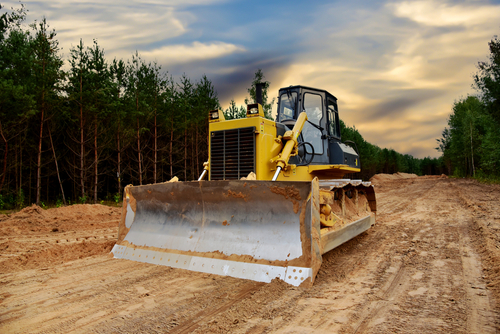Land Clearing Techniques for Efficient Property Preparation

Land clearing is the process of removing trees, brush, and debris from a specific area to prepare it for construction, agriculture, or other land uses. It involves techniques like cutting, bulldozing, and excavation to create usable space while managing environmental impact effectively.
Understanding land clearing methods and regulations is essential for anyone planning a project that alters the natural landscape. Proper clearing ensures safety, compliance, and helps preserve soil quality and local ecosystems where possible.
The choice of equipment and approach depends on the site conditions and intended use. Knowing what to expect in terms of cost, time, and environmental considerations can save resources and avoid common pitfalls.
Land Clearing Fundamentals
Land clearing involves removing trees, shrubs, rocks, and other obstacles to prepare a site for construction, agriculture, or development. It requires understanding the purpose, methods, and tools to complete the task efficiently and safely.
What Is Land Clearing
Land clearing is the process of removing vegetation and debris from a piece of land to make it usable for various purposes. It often includes cutting down trees, uprooting stumps, and disposing of unwanted materials.
This activity is critical for site preparation in construction, farming, or landscaping. Proper clearing ensures the land is ready for grading, building foundations, or planting crops. It also helps reduce fire risks and improve accessibility.
Types of Land Clearing
There are several methods of land clearing, each suited to different conditions and goals:
- Mechanical Clearing: Using heavy machinery like bulldozers and excavators to remove vegetation quickly.
- Manual Clearing: Labor-intensive removal with hand tools, suitable for small or sensitive areas.
- Chemical Clearing: Applying herbicides to kill unwanted plants, often used in conjunction with other methods.
- Controlled Burning: Burning vegetation to clear land and improve soil nutrients, used cautiously due to safety concerns.
Selecting a method depends on soil type, terrain, vegetation density, and environmental regulations.
Common Equipment and Tools
Land clearing relies on specialized equipment for efficiency and safety. Common machinery includes:
- Bulldozers: Push large amounts of earth, clear trees, and move debris.
- Excavators: Dig and uproot stumps or rocks with a hydraulic arm.
- Mulchers: Grind vegetation into mulch, minimizing waste.
- Chainsaws: Cut trees and branches in manual or mechanical clearing.
Additional tools include brush cutters, stump grinders, and trucks for hauling debris. Proper equipment choice depends on the scale of the project and land conditions.
Land Clearing Methods and Best Practices
Effective land clearing balances efficiency, cost, and environmental impact. Choosing the right methods requires understanding the trade-offs between manual labor and machinery, adhering to regulations, and minimizing harm to ecosystems.
Manual Versus Mechanical Clearing
Manual clearing uses hand tools like chainsaws, axes, and machetes. It is suitable for small areas or locations with limited access. This method allows precise removal, reducing damage to desirable vegetation and soil.
Mechanical clearing involves heavy equipment such as bulldozers, excavators, and mulchers. It is faster and better for large or heavily forested sites but can cause significant soil disturbance and compaction.
Costs vary considerably: manual clearing is labor-intensive and slower, leading to higher hourly expenses but lower equipment costs. Mechanical methods require upfront investment but offer faster project completion.
Environmental Considerations
Land clearing often affects wildlife habitats, soil quality, and water resources. Minimizing tree removal and preserving buffer zones near waterways helps protect biodiversity and reduce erosion.
Proper disposal of vegetation debris prevents pest infestations and disease spread. Using mulching instead of burning reduces air pollution and retains organic matter in the soil.
Implementing erosion control measures like silt fences or cover crops protects soil integrity. Conducting environmental impact assessments before clearing ensures compliance with conservation standards.
Permitting and Regulations
Most jurisdictions require permits before land clearing to ensure legal compliance and environmental protection. Permit requirements may include site plans, erosion control strategies, and timelines.
Regulations often specify protected species, buffer zones, and allowable clearing seasons. Violations can result in fines, project delays, or mandatory restoration.
Consulting local agencies early in project planning avoids costly penalties. Maintaining documentation of permits and inspections demonstrates adherence to legal obligations throughout the clearing process.
